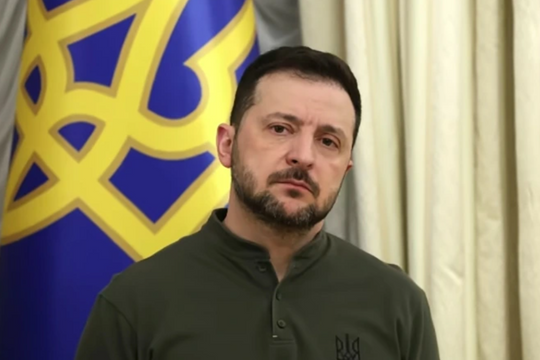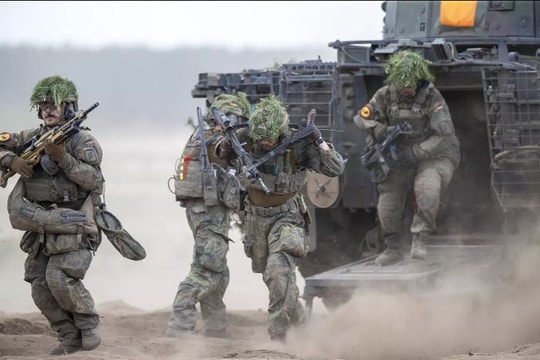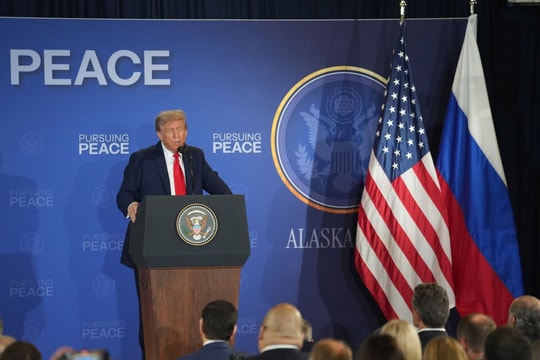The C-17 Globemaster III transport aircraft is used to transport the Beast and necessary equipment for the US President abroad.
 |
| A Boeing C-17 Globemaster III heavy transport aircraft landed at Da Nang airport yesterday afternoon, carrying a lot of equipment to serve President Donald Trump's plane to Da Nang to attend the APEC Summit Week in the next few days. Mr. Trump is making his first trip to Asia since taking office, visiting 5 countries in the region, including Vietnam. Photo: Duc Dong. |
 |
| The C-17 Globemaster III is the second largest transport aircraft in the US Air Force's inventory, after the C-5M Galaxy. It was developed in the 1980s and 1990s by McDonnell Douglas, now part of Boeing. The Globemaster III is named after two previous McDonnell Douglas heavy transport aircraft, the C-74 Globemaster and the C-124 Globemaster II, according to Airforce Technology. |
 |
| After nearly 30 years of operation, the C-17 Globemaster III has always been considered the backbone of the US military transport industry. Not only is it favored by the military, the C-17 Globemaster III is often used by the White House to accompany the US president on foreign trips. |
 |
| With a payload of up to 77.5 tons, the C-17 Globemaster III can easily transport vehicles in the US president's motorcade, including two Cadillacs nicknamed "The Beast". |
 |
| The Beast armored vehicle was loaded onto a C-17 transport aircraft during then-US President Barack Obama's 2016 visit to Germany. |
 |
| US air force soldiers are using iron chains to secure the Beast to the floor of the C-17 transport aircraft, ensuring the vehicle does not shake or move during flight. |
 |
| Vehicles serving the US President's entourage are also transported by C-17. Photo: US Secret Service. |
 |
| Marines One helicopters are also carried by C-17 aircraft on official trips, in case the US president cannot travel by road from the airport to his work site. |
 |
| In addition to transporting equipment for the President on foreign trips, the C-17 also serves the US Air Force's transport operations. The aircraft is capable of transporting most of the US military's heavy combat vehicles such as M1 Abrams tanks and M2/M3 Bradley armored vehicles. In particular, each C-17 can carry four UH-60 Black Hawk transport helicopters or two AH-64 Apache attack helicopters. |
 |
| C-17 Globemaster landing on different types of runways |
The C-17 Globemaster III's standout feature is its ability to operate on a variety of runways, including those that are not concrete-covered. The C-17's thrust reverse system utilizes thrust better than conventional aircraft, helping to blow foreign objects away from the engine's air intake, while also allowing the Globemaster III to reverse without a support vehicle, maximizing its ability to operate on unmanned runways or locations without logistical support, such as foreign airports.
The aircraft can land with a total cargo load of up to 72 tons on a runway just 914 meters long. In the photo, a C-17 is landing with the thrust reverse system (circled in red) fully extended.
 |
| Thanks to its high level of automation, the C-17's crew consists of only three people, including the captain, first officer and cargo handler to operate the automated systems. |
 |
| The AN/ALE-47 system can fire various types of decoys to fool missiles using heat-seekers or radar. The crew can choose from three decoy launch modes: automatic, semi-automatic or manual. |
The C-17 is equipped with the AN/AAR-47 thermal sensor system mounted around the fuselage, helping the crew detect the heat signature from the exhaust of anti-aircraft missiles. To reduce the rate of false alarms, the AN/AAR-47 can be set to monitor the individual signals of each type of missile. If it detects an approaching missile, it will alert the crew to take action and automatically send a signal to the AN/ALE-47 decoy system.
 |
| With a payload capacity of 73 tons, the C-17 Globemaster III can fly 5,200 km continuously without landing to refuel. This number can be increased many times if the aircraft is refueled in the air. |
According to VNE





















